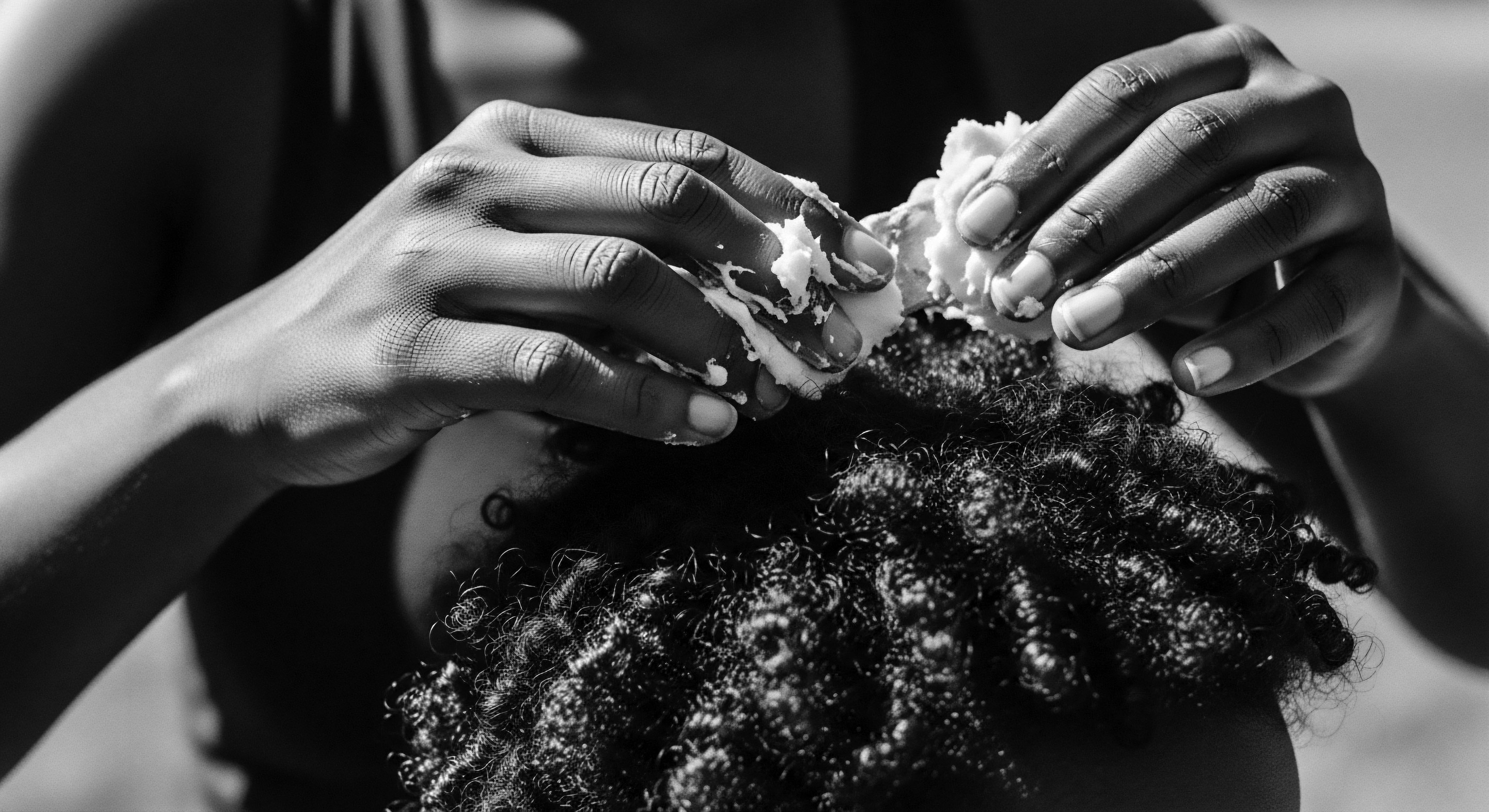
Roots
In the sun-baked cradle of Kemet, where the Nile’s pulse mirrored the rhythm of life, hair was never simply a crowning glory. For our ancestors, those who walked the desert sands and carved their stories into stone, each strand held a lineage, a living narrative, a connection to the very earth itself. It was a canvas for identity, a shield against the elements, and a vibrant extension of one’s spirit.
When we speak of the natural ingredients they used for hair care, we are not merely listing botanicals; we are tracing the echoes of hands tending to coils and kinks, braiding dreams, and honoring the wisdom passed down through generations. This is a story woven with the rich, textured strands of our collective past, a heritage that whispers of resilience and beauty.

What Did Ancient Egyptians Know About Hair Biology?
The ancient Egyptians, though without microscopes or modern chemical analysis tools, possessed an intuitive, observational understanding of hair’s needs. They recognized the relentless drying power of the desert sun and wind, and how it stripped moisture from hair. Their practices aimed to counteract this harsh environment, focusing on hydration, strengthening, and protection. They understood that healthy hair originated from a nourished scalp.
This awareness guided their choice of ingredients, favoring emollients and rich botanical extracts. The care extended to all hair types, including the diverse range of textured hair present across the region, which is a significant thread in our ancestral story.
Consider the daily lives in ancient Egypt. The intense climate necessitated practical solutions for maintaining hair’s integrity. Their approach was inherently holistic, recognizing that external application supported an inner vitality. This deep appreciation for self-care, as seen in their beauty regimens, was viewed as a positive commitment to oneself, a way of allowing beauty to flow from within.
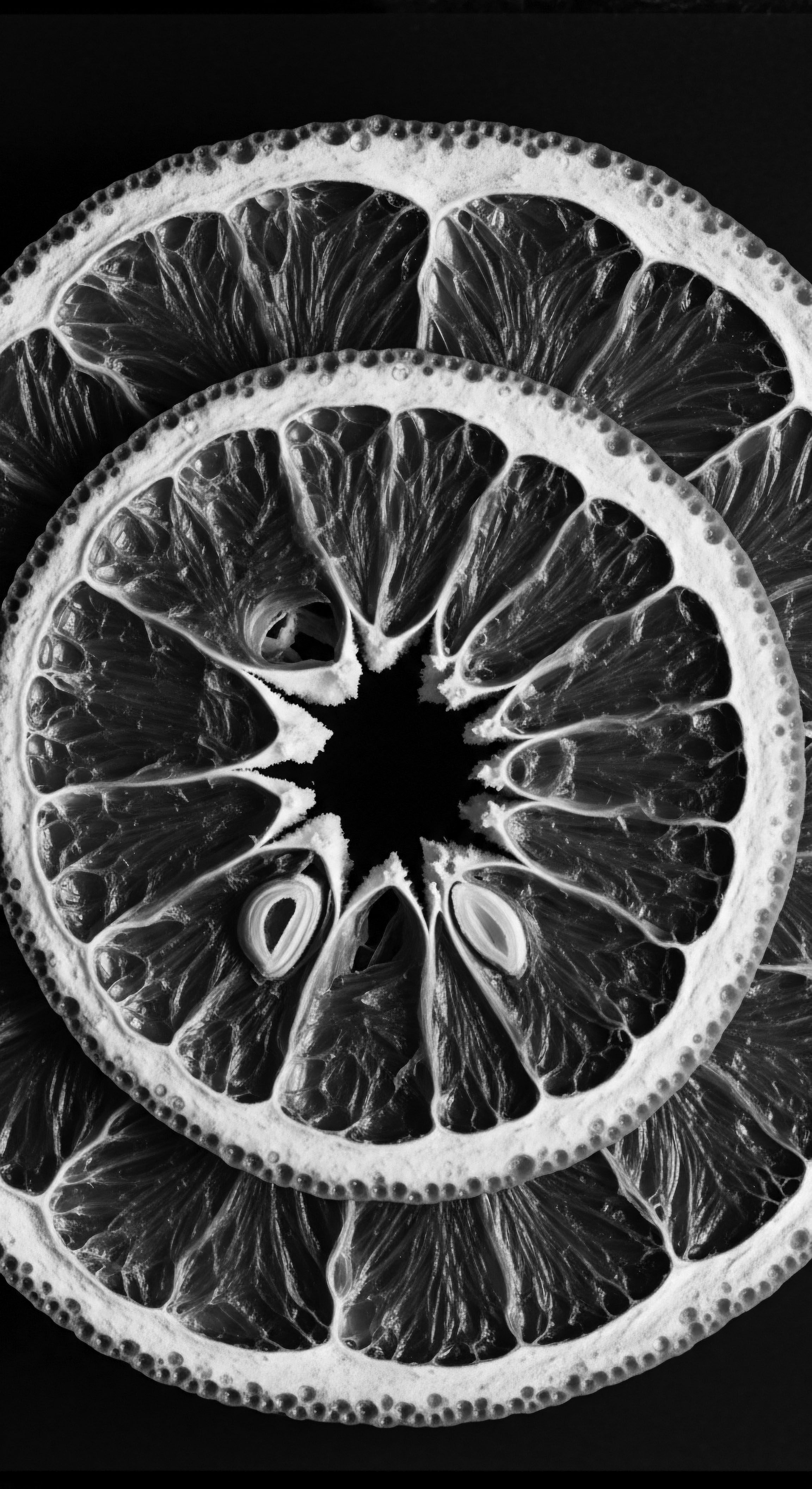
The Earliest Earth Offerings for Hair
From the earliest dynastic periods, certain ingredients emerged as staples, culled directly from their surroundings. These were the foundational elements of ancient Egyptian hair care, deeply integrated into daily life and ceremony.
- Castor Oil ❉ This thick, emollient oil was a cornerstone, renowned for its moisturizing properties and its ability to condition and fortify hair. Ancient Egyptians even perfected a method of roasting castor beans to create an ash, believed to enhance the oil’s effectiveness in promoting hair regeneration and growth. Cleopatra herself is said to have relied on castor oil for her lustrous tresses.
- Almond Oil ❉ Valued for its nourishing qualities, almond oil worked to keep hair silky and smooth, combating dryness and adding sheen. It was often combined with other natural elements to create powerful hair treatments.
- Moringa Oil ❉ Dubbed the “miracle oil,” moringa was prized for its lightweight texture and high antioxidant content. It provided nourishment to the scalp, supported hair growth, and upheld overall hair health in the arid climate.
- Pomegranate Oil ❉ Extracted from tiny seeds, this golden liquid was a vital part of their beauty regimen. Rich in antioxidants, vitamins, and essential fatty acids, pomegranate oil acted as a natural shield against environmental damage, helping hair remain resilient and hydrated. Massaging it into the scalp improved circulation and strengthened follicles, reducing breakage. Beyond its practical uses, pomegranate also carried symbolic weight, representing renewal and vitality in Egyptian society.
These oils were not just functional; they were part of a deeper connection to nature, and their application became a ritual, a moment of mindful self-tending. The selection of these particular oils speaks volumes about a deep, empirical understanding of what high porosity and textured hair types needed to thrive in harsh environments—namely, consistent, deep hydration and protection.
Ancient Egyptian hair care ingredients were chosen with profound wisdom, offering not just superficial beauty but protection and nourishment for hair in the harsh desert environment.
Animal fats were also utilized, often blended with plant materials, to create hair coatings and balms. Archaeological analysis of mummies has revealed fatty materials, such as palmitic and stearic acid, applied to styled hair, indicating these were used for hair maintenance even in the afterlife. Beeswax and various resins played a similar dual role, providing both hold for elaborate styles and protection for the hair shaft.

Ritual
The application of natural ingredients in ancient Egypt transcended simple grooming; it was a deeply ingrained ritual, a communal act, and an expression of profound cultural beliefs. Hair, especially textured hair , carried immense symbolic weight, communicating age, marital status, social rank, and even tribal identity in many African societies, including ancient Egypt. The care practices were meticulously performed, often within social settings, transforming the act of beautification into a shared experience, a tender thread connecting individuals to their communities and ancestors.
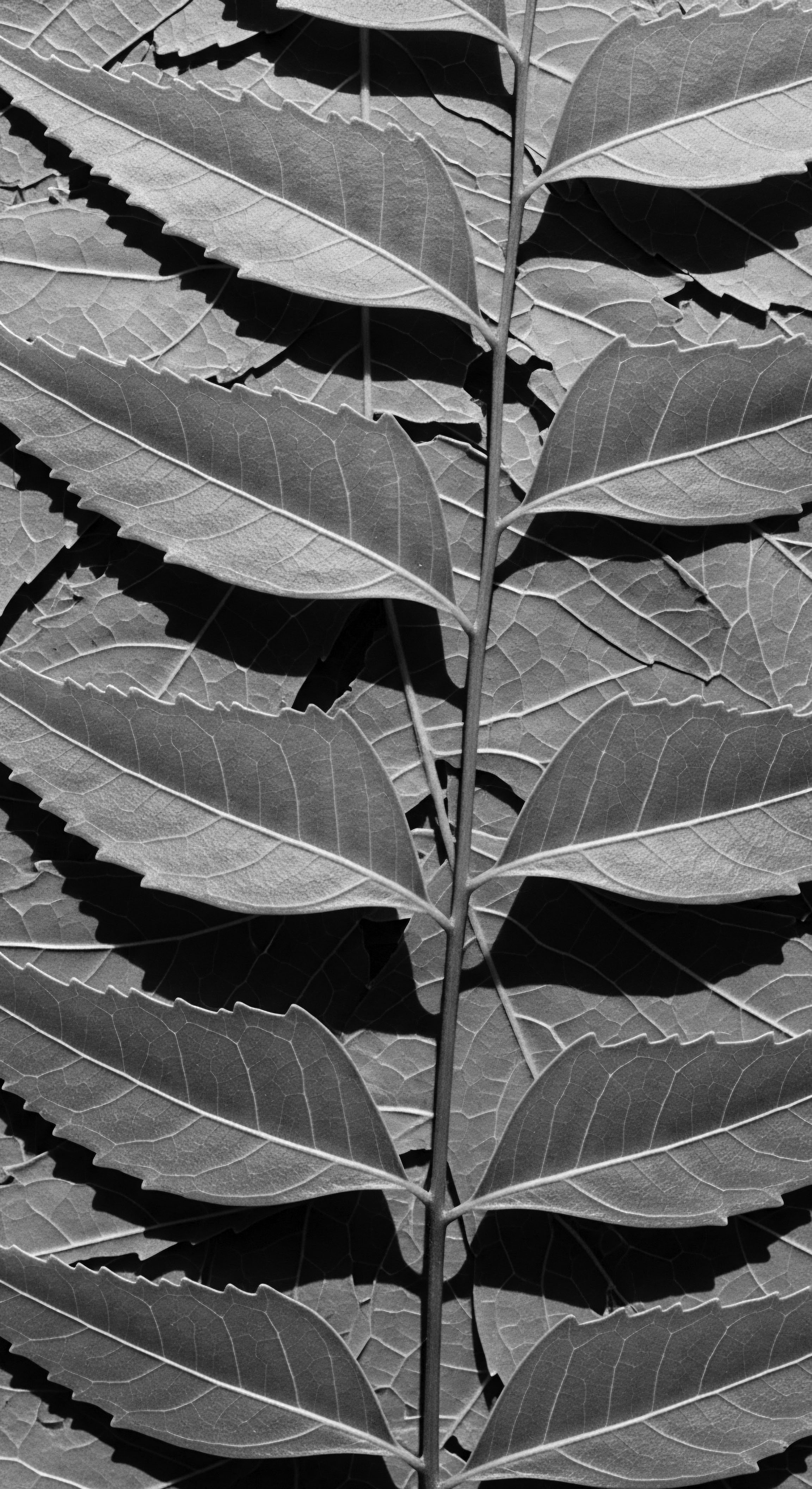
How Did Egyptians Practice Hair Oiling?
Hair oiling, a practice with a long lineage across African and South Asian cultures, was central to ancient Egyptian hair care. Oils like castor and almond were massaged into the scalp and along the hair strands, not merely for shine but for deep conditioning, strengthening, and promoting growth. This consistent application countered the drying effects of the desert air, ensuring hair remained supple and less prone to breakage.
The ritual would often begin with warming the oil, enhancing its ability to penetrate the hair shaft and stimulate the scalp. This gentle massage, in many traditional African contexts, also served to exfoliate the scalp and boost blood circulation, providing essential nutrients to the hair follicles and encouraging healthy growth. This deliberate, slow method of application underscores the meditative aspect of ancient hair care, a practice far removed from today’s hurried routines.
The practice of oiling was not limited to individual care but often extended to communal bonds. In many African communities, the act of tending to another’s hair, especially through oiling and braiding, was a form of bonding and social exchange. While specific textual evidence detailing such communal oiling rituals in ancient Egypt is scarce, the prevalence of hair care as a social activity across African women and civilizations suggests a shared heritage of this practice.

What Role Did Henna Play in Ancient Hair Care?
Henna, derived from the finely ground leaves of the Lawsonia plant, held a significant place in ancient Egyptian hair practices. It was not simply a dye; it was valued for its conditioning properties as well. The paste, created by mixing the powdered leaves with water or oils, imparted a vibrant reddish tint to hair, often used to cover gray strands or enhance natural color.
Henna’s cultural significance in ancient Egypt extended beyond aesthetics. It symbolized joy, vitality, and beauty, frequently applied during celebrations and ceremonies, marking important life events. This natural pigment, in its dual capacity for color and conditioning, speaks to a heritage where beauty was intrinsically linked with natural efficacy and symbolic meaning.
The use of henna to color hair can be directly linked to a lineage of hair adornment that spans centuries and continents, particularly within cultures that celebrate textured hair . The transformative yet nourishing aspect of henna reflects a care philosophy where alteration did not mean damage, a principle still sought in modern natural hair movements.

How Were Wigs and Extensions Integrated into Daily Life?
Wigs and hair extensions were remarkably common in ancient Egypt, worn by both men and women across social strata, serving various purposes that stretched from hygiene to social status. They were crafted with meticulous skill, using human hair, wool, or plant fibers, often braided into intricate designs.
The prevalence of wigs and extensions in ancient Egypt resonates deeply with the textured hair heritage of Black and mixed-race communities. For centuries, braids, weaves, and extensions have been foundational to Black hair culture—serving as protective styles, expressions of identity, and reflections of societal status. This continuity is not coincidental; it is a direct line of ancestral practice. As noted by some scholars, the use of wigs and hair extensions in ancient Egypt is explicitly linked to practices still common among Africans and the African diaspora today, often facing ridicule for what were, in fact, practices of ancient Kemet.
The oldest hair extensions, discovered in a plundered female burial at Hierakonpolis, date back to approximately 3400 BCE. This fact alone highlights a long and sophisticated tradition of manipulating and enhancing hair, a tradition that predates many contemporary beauty standards.
| Ancient Egyptian Practice Oiling with castor and almond oils |
| Significance to Heritage Deep nourishment, scalp health, shine for diverse hair textures |
| Modern Parallel in Textured Hair Care Pre-poo treatments, deep conditioning, daily oiling for moisture retention in coils and curls |
| Ancient Egyptian Practice Use of henna for color and conditioning |
| Significance to Heritage Natural hair dye, strengthening, cultural and ceremonial application |
| Modern Parallel in Textured Hair Care Herbal hair treatments, natural coloring alternatives, connecting to ancestral beauty rituals |
| Ancient Egyptian Practice Wigs and extensions from human hair, wool, plant fibers |
| Significance to Heritage Protection from environment, symbol of status, hygiene, elaborate styling |
| Modern Parallel in Textured Hair Care Protective styles like braids, weaves, wigs; diverse forms of hair expression and identity |
| Ancient Egyptian Practice These ancient methods reflect a continuity of care and expression for textured hair, underscoring a living heritage. |
These practices were not merely about adornment; they were about hygiene in a challenging climate (wigs protected shaved heads from sun and lice) and about expressing social standing. The ability to create such intricate hairpieces, secured with beeswax and resin, points to an advanced understanding of hair manipulation and styling, a testament to the ingenuity of their care traditions.
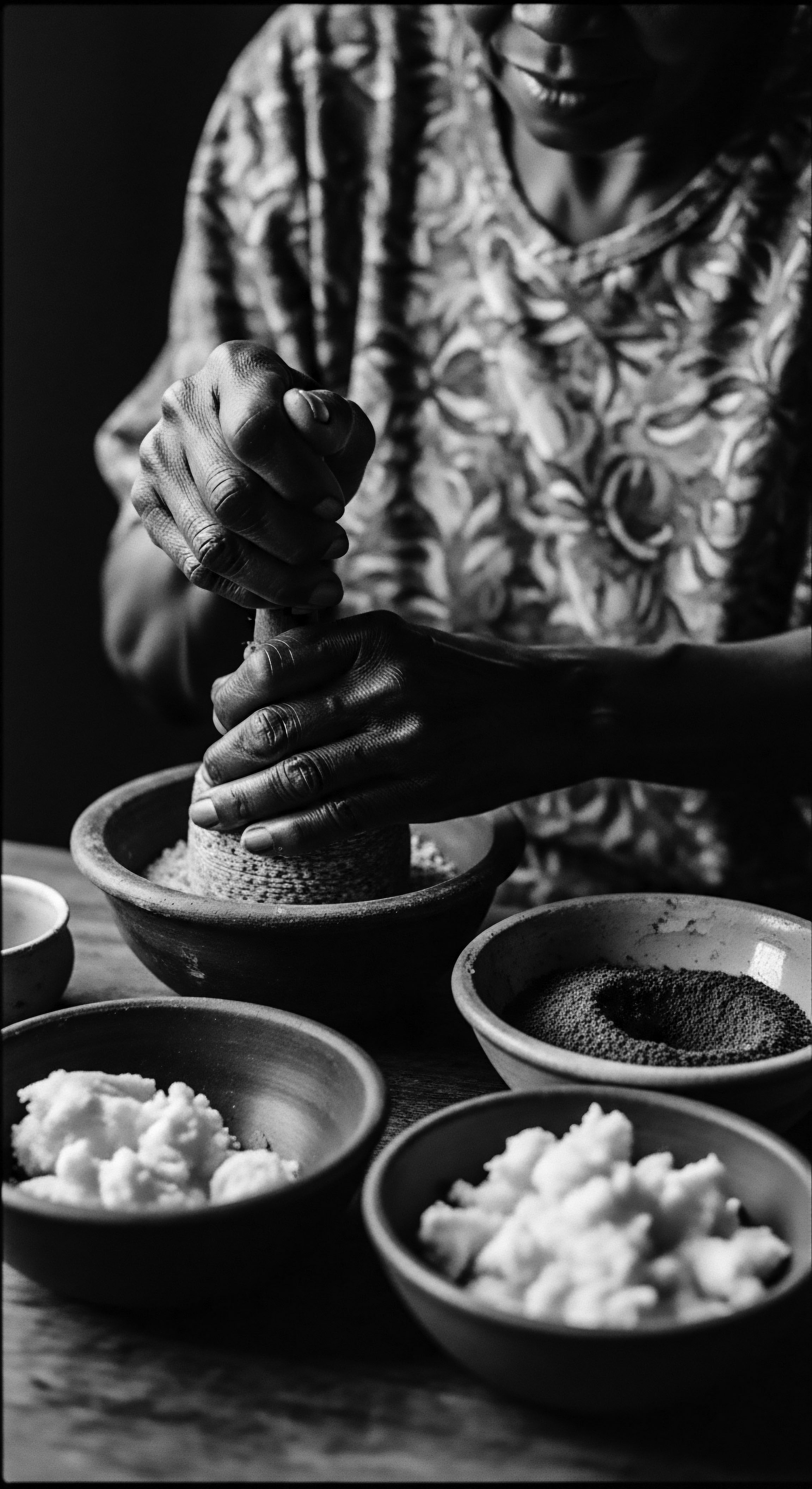
Relay
The wisdom embedded in ancient Egyptian hair care practices reverberates through time, offering profound insights into the ancestral blueprints of textured hair heritage . This is where the meticulous observations of the past meet the validating lens of modern science, revealing a continuous thread of ingenious care. We observe how the elemental biology of hair was instinctively understood and honored, long before the advent of sophisticated laboratories.
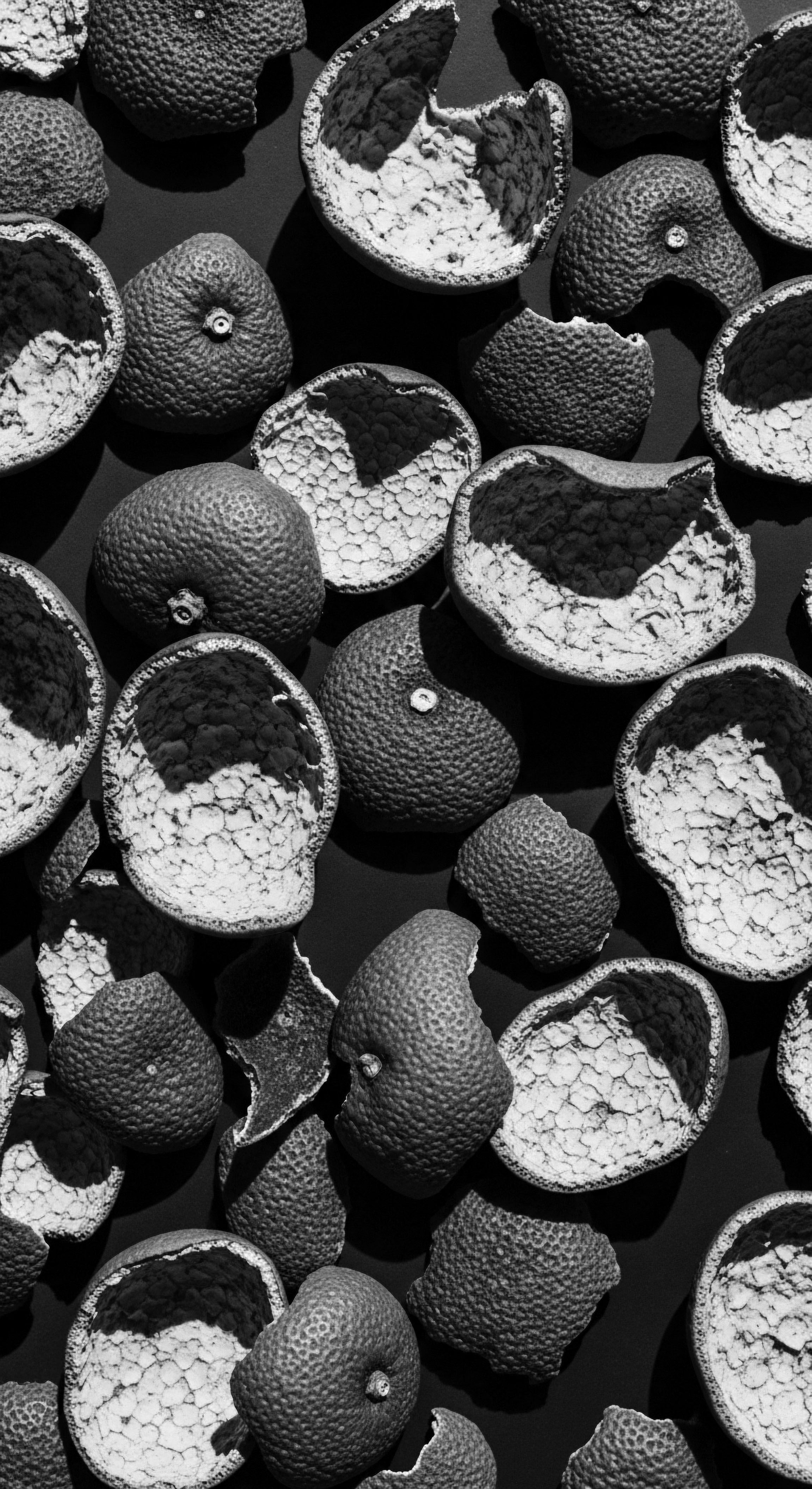
How Do Ancient Hair Treatments Align With Modern Hair Science?
The natural ingredients favored by ancient Egyptians—oils, honey, various plant extracts—demonstrate a remarkable alignment with contemporary scientific understanding of hair health. Their reliance on emollients like castor, almond, and moringa oils provided essential fatty acids and vitamins that nourish the hair shaft and scalp. Modern science confirms that these oils can deeply hydrate, reduce breakage, and promote a healthy environment for hair growth. For instance, castor oil, known for its ricinoleic acid, is widely recognized today for its moisturizing and hair strengthening properties, mirroring the ancient Egyptians’ observations.
The use of plant-based dyes like henna, beyond its color-imparting qualities, acts as a natural protein treatment, strengthening the hair cuticle and adding a protective layer. This practice resonates with modern holistic hair care that champions strengthening natural hair without harsh chemicals. Even the use of beeswax and resins to set styles finds a parallel in current product formulations that prioritize hold and protection, albeit with different chemical compositions.
A striking example of this scientific validation of ancient practices lies in the archaeological findings of hair gels. Researchers analyzing ancient Egyptian mummies discovered the presence of fatty materials, specifically palmitic and stearic acid, applied to styled hair, even in naturally mummified remains. This chemical analysis confirms that the coating of hair with a fatty substance was a deliberate styling and preservation technique, not just a byproduct of embalming procedures. This provides empirical evidence that ancient Egyptians were indeed using what we might consider “hair gel” to manage and sculpt their hair, demonstrating an advanced practical chemistry rooted in natural components.
Ancient Egyptian hair formulations, driven by empirical observation, remarkably align with modern scientific understanding of natural ingredients for hair health.
Moreover, the holistic approach to beauty embraced by the Egyptians, viewing skin and hair care as part of overall wellbeing, anticipates current wellness movements. Ingredients like aloe vera and specific clays were used for soothing and balancing pH, principles that remain cornerstones of gentle, effective care today.
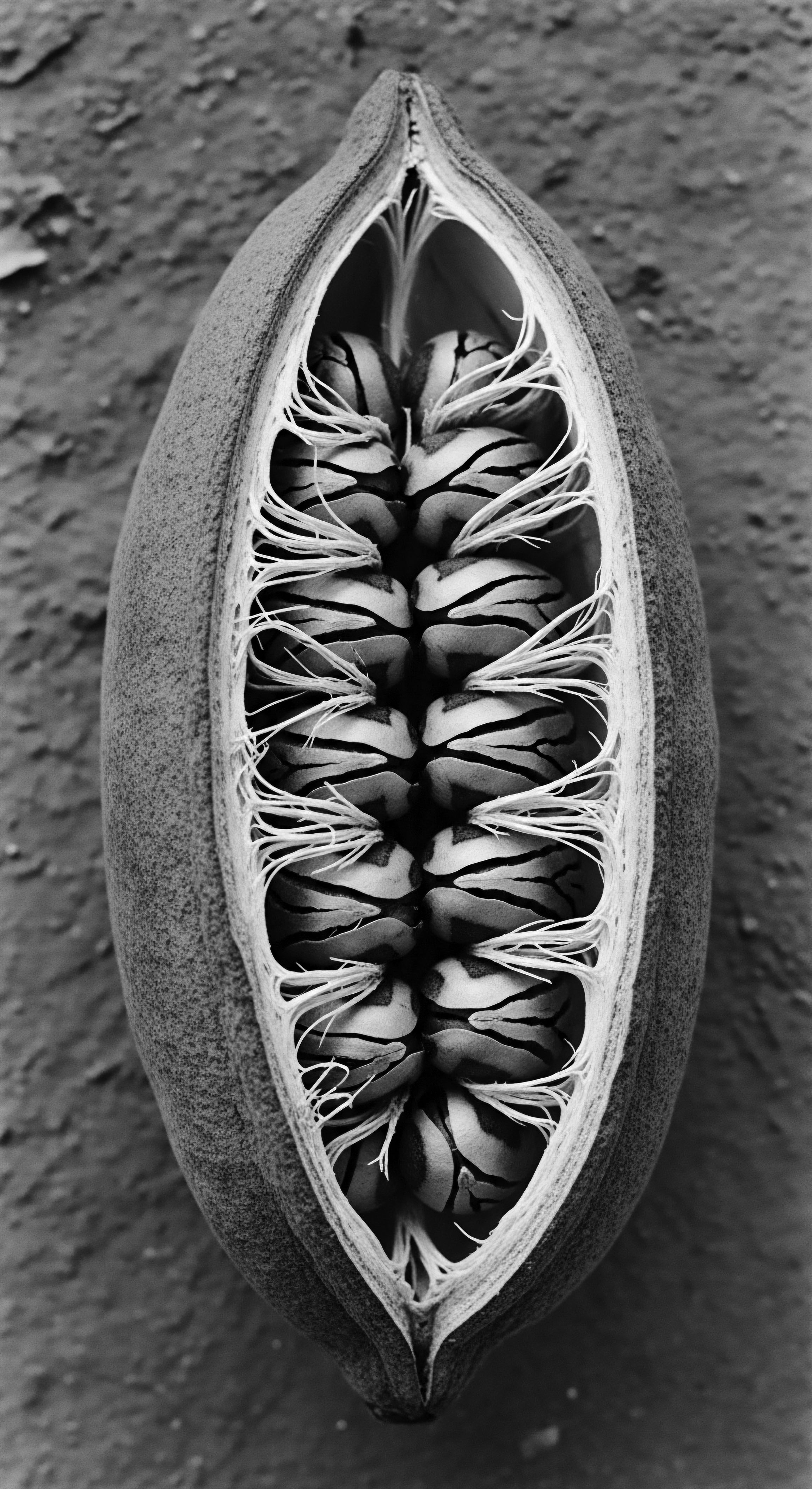
How Did Ancestral Braiding Practices Shape Identity?
The intricate braiding and twisting techniques prevalent in ancient Egypt and across various African societies serve as a powerful testament to the enduring heritage of textured hair . These styles were not merely aesthetic choices; they were profound statements of identity, markers of social status, and even means of communication. The historical record reveals that “Twisting and braiding the hair originated in Namibia around 3500 BC”. This specific historical detail underscores the deep, continental roots of practices that remain central to Black hair culture globally.
The symbolism associated with different hairstyles in ancient Africa was rich and varied. A style could convey a person’s age, marital status, ethnic identity, or wealth. This deep cultural embeddedness of hair care meant that tending to hair was often a communal activity, a time for socializing and intergenerational bonding.
This communal aspect of hair care, still present in many Black communities today, is a direct lineage from these ancient practices. The continuity of these traditional methods, like cornrows, locks, and various braided styles, demonstrates a resilience of cultural expression despite historical attempts to suppress them.
The creation of elaborate wigs and hair extensions, often braided and adorned, also reflects this cultural importance. Elite individuals and royals in ancient Egypt wore such pieces, sometimes made of human hair, sheep’s wool, or plant fibers, with beeswax and resin used to set the styles. The Nubian wig, for instance, which mimicked the short, curly hair of Nubian tribespeople, gained popularity during the Amarna period, perhaps adopted by figures like Queen Nefertiti. This shows a cross-cultural appreciation of natural textures within ancient Egypt itself, further reinforcing the rich diversity of African hair expressions.
- Braids as Language ❉ In West African societies as early as the 1400s, hairstyles communicated social status, marital status, wealth, age, ethnicity, and even surname (EdwardAsare, 2021).
- Wigs as Status Symbols ❉ Ancient Egyptian wigs, often made of human hair or sheep’s wool, were not just fashionable; they were a direct indicator of wealth and social standing, with more elaborate wigs being significantly more costly (Fletcher, 2016).
- Hair as Power ❉ In ancient Egypt, hair possessed magical power, believed to protect individuals, especially children, from natural and supernatural dangers, and was even used in rituals to defeat enemies (The Past, 2025).
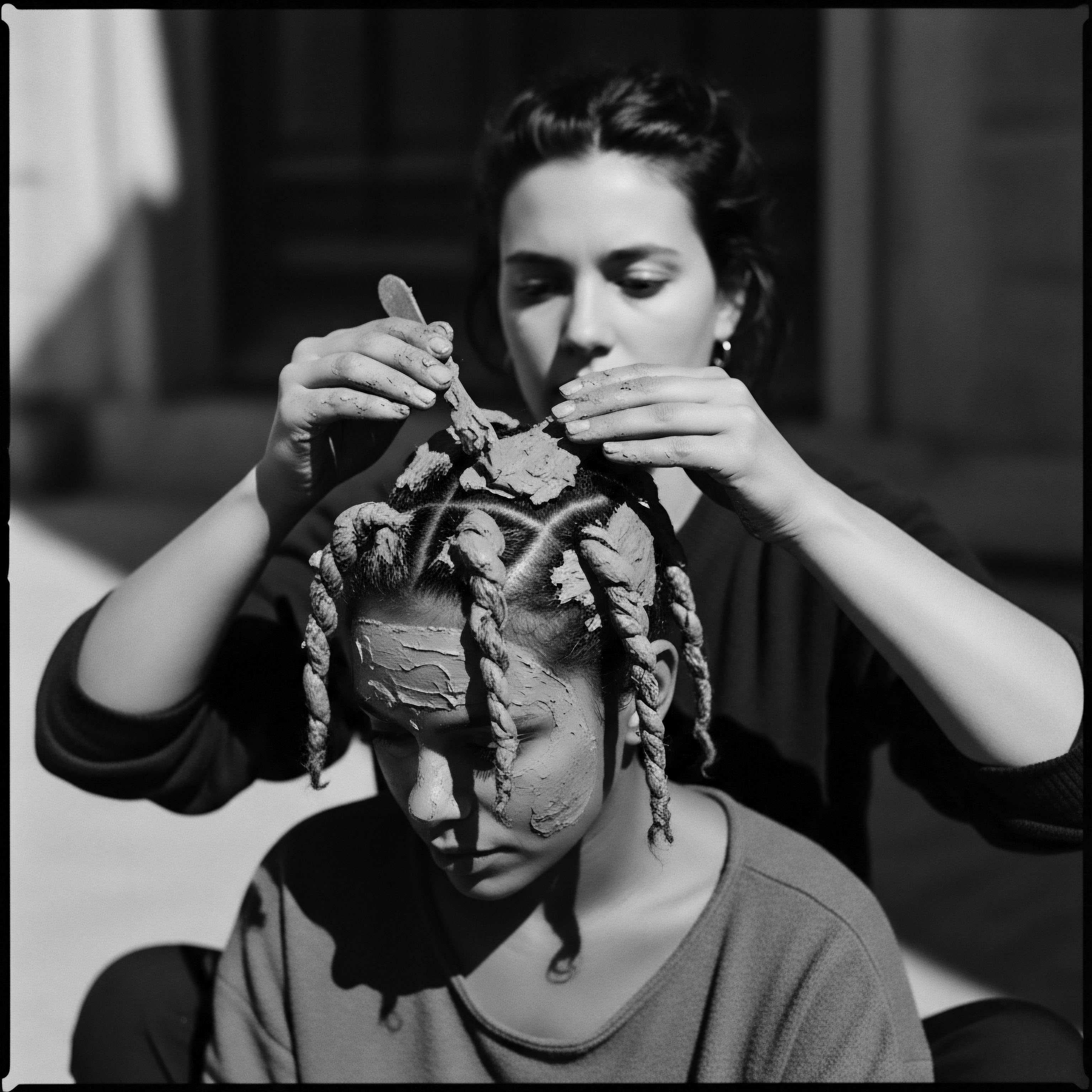
What Were the Sacred Connections of Hair?
Beyond practical and social functions, hair in ancient Egypt held deep spiritual and mystical connotations. It was regarded as a source of vitality and, by extension, power. This belief system extended to rituals aimed at protecting individuals and even in funerary rites, where hair offerings were sometimes placed in tombs. The power inherent in hair was believed to safeguard children and the deceased from invisible entities, demonstrating a sacred link between hair and life force.
The meticulous care given to hair, from cleansing to styling, was therefore an act of reverence, ensuring that this conduit of vitality was maintained and honored. This sacred aspect of hair care echoes across many Indigenous and African traditions, where hair is considered a spiritual antenna, closely connected to one’s essence and the divine. This deep spiritual connection elevates ancient hair care beyond mere cosmetic practice, placing it within a broader framework of holistic existence and ancestral veneration.
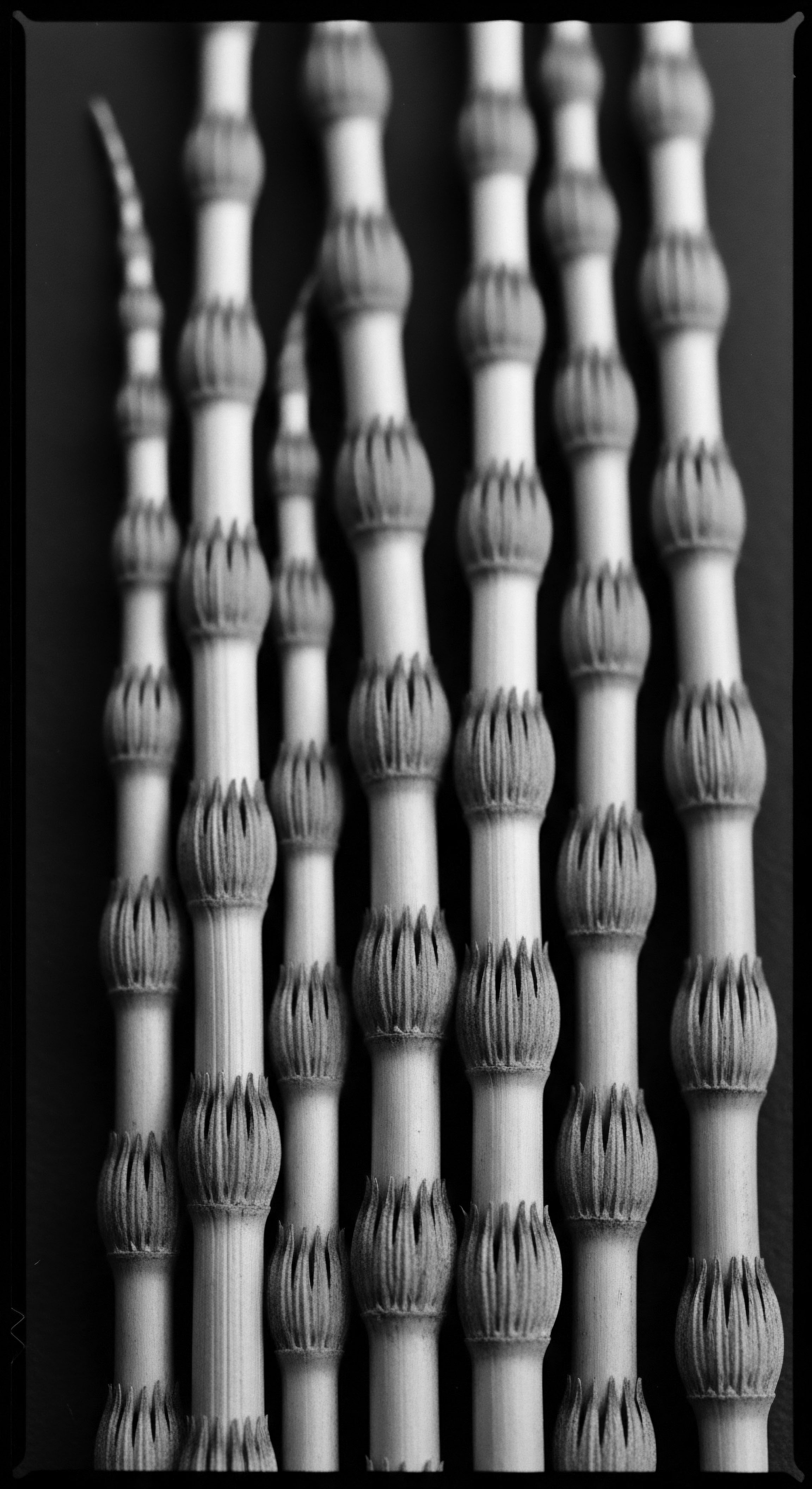
Reflection
As we close this inquiry into the natural ingredients ancient Egyptians used for hair care, a profound truth emerges ❉ the echoes of their practices are not distant whispers but vibrant rhythms within the “Soul of a Strand” today. Our journey through Kemet’s beauty wisdom reveals a lineage of care, a testament to resilience deeply etched in the textured hair heritage of Black and mixed-race communities. The oils, the henna, the very artistry of their wigs—they were not mere fleeting trends. They were expressions of identity, protection against the elements, and deeply ritualized acts of self-honor that have been carried forward through time, adapting yet retaining their ancestral heart.
The ingenious ways our forebears utilized nature’s bounty for hair wellness—from the nourishing touch of castor oil to the strengthening power of henna—offer more than just historical facts. They provide a blueprint for a holistic approach to hair care that prioritizes natural efficacy and reverence for our unique hair textures. This historical continuity challenges us to look beyond fleeting modern solutions and rediscover the enduring wisdom of the earth and the hands that worked with it.
The legacy of ancient Egyptian hair care, particularly its alignment with the needs and expressions of textured hair , invites us to view our own hair not just as a physical attribute, but as a living archive. It holds stories of innovation, cultural pride, and unwavering beauty through the ages. By acknowledging this deep past, we do more than simply understand history; we reclaim a part of our heritage, celebrating the enduring artistry and profound wisdom that flows through every coil and curl, connecting us to the ancient Nile, to the sun-baked lands, and to a rich, unbroken tradition of care.
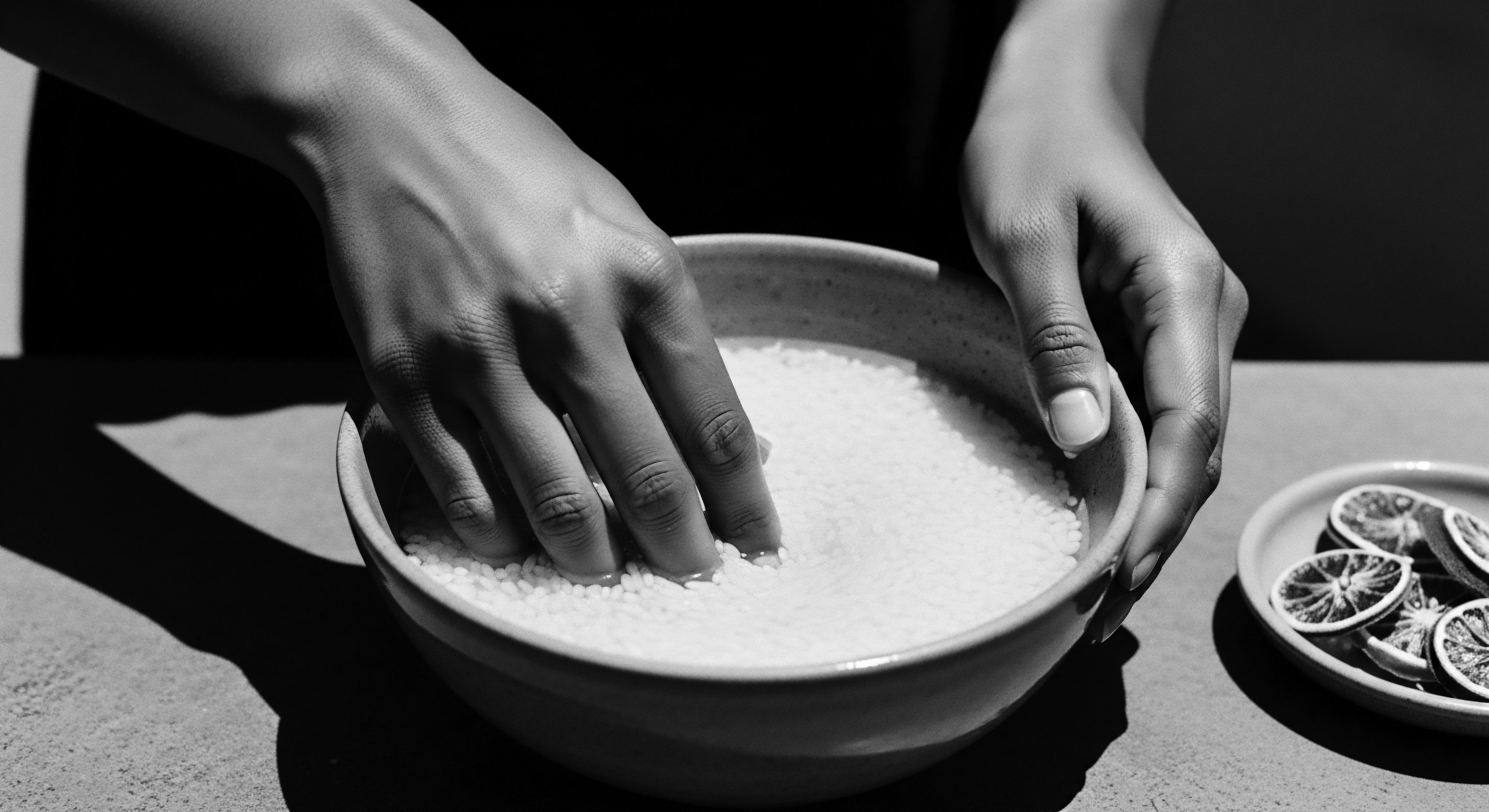
References
- EdwardAsare. (2021). The Role of Hair in Ancient African Cultures.
- Egyptra Travel Services. (2025). From Ancient Egypt to Modern Beauty ❉ Timeless Cosmetic Secrets.
- Fletcher, J. (2016). An Ancient Egyptian Wig ❉ Construction and Reconstruction. Internet Archaeology.
- Global Beauty Secrets. (n.d.). Egyptian Honey and Castor Hair Oil.
- Preneur World Magazine. (n.d.). Five Beauty Secrets of the Ancient Egyptians.
- Quora. (2024). What methods did ancient Egyptians use to achieve straight and shiny hair? Did they use any hair products?
- Quora. (2023). Did ancient Egyptians have Afro-textured hair?
- ResearchGate. (2016). An Integrated Study of the Hair Coating of Ancient Egyptian Mummies.
- ResearchGate. (n.d.). Ancient Egyptian Hair Gel ❉ New Insight into Ancient Egyptian Mummification Procedures Through Chemical Analysis.
- The Collector. (2022). Ancient Egypt’s Most Indulgent Beauty Secrets.
- The Mane Choice. (n.d.). Ancient Egyptian Anti-Breakage And Repair Antidote Hair Mask.
- The Past. (2025). The Magic and Power of Hair in Ancient Egypt.
- Wikipedia. (n.d.). Nubian Wig.
- Zaid, R. (2024). Ancient Egyptian Beauty Secrets That Still Work Today.
